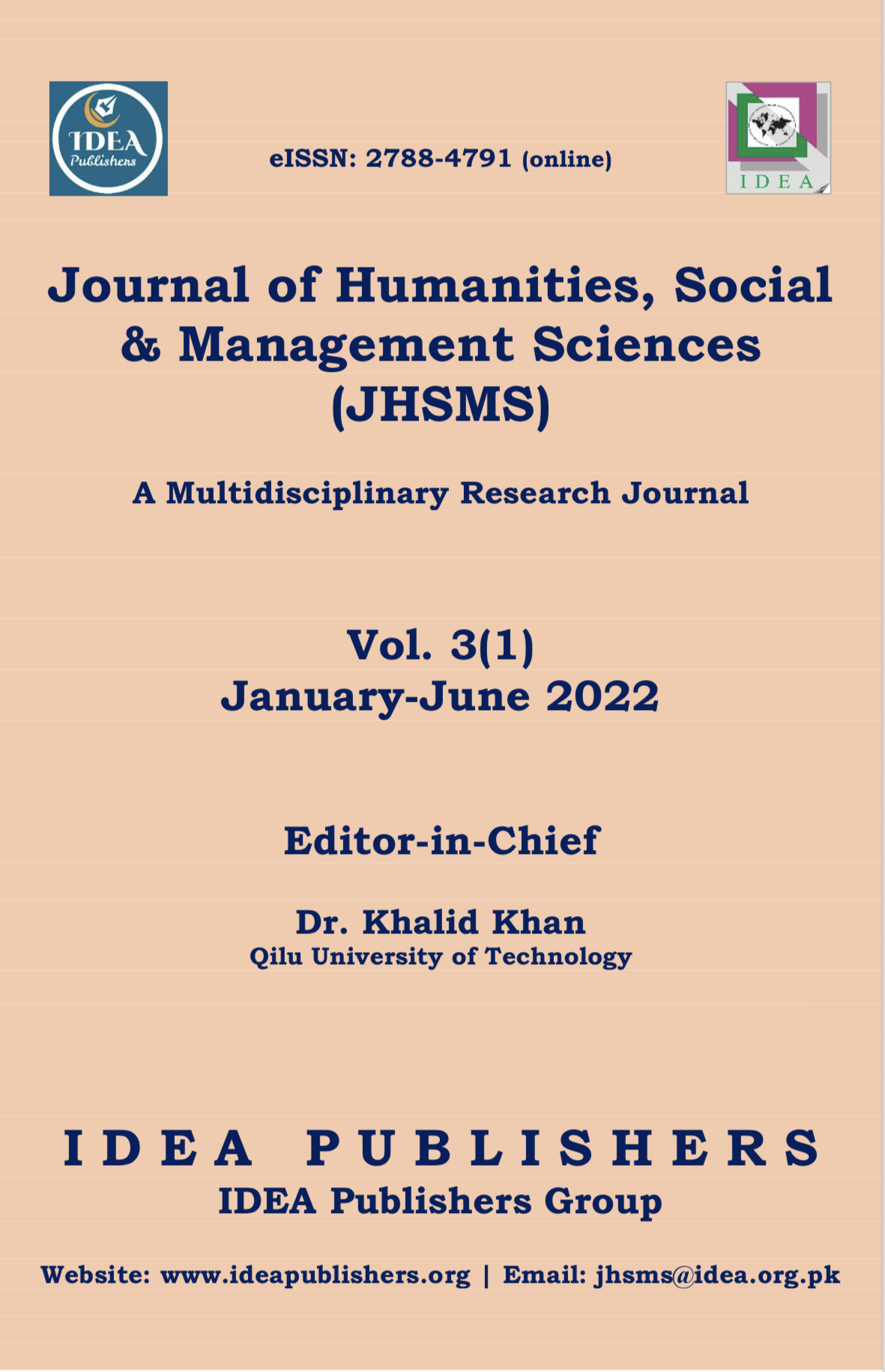Practices and reforms in the legislation of polygamy in Pakistan
DOI:
https://doi.org/10.47264/idea.jhsms/3.1.21Keywords:
Muslim family law, polygamy, legislation for polygamy, family law, polygamy reformsAbstract
In Pakistan, polygamy is a serious problem that requires legislation to address. Pakistani law imposes confinement through the Muslim Family Law Ordinance (MFLO) of 1961, which states that no man can marry for the second time without the first wife's consent, but polygamy is not prohibited in the meanwhile. In Pakistan, these rights are routinely violated. The purpose of this research is to look into Pakistan's polygamy difficulties. According to Islamic law, marriage is a civil contract between two people, a man and a woman. It generates all rights and obligations straight now. Nikah is more than simply a contract; it's a way to formalise a man and woman's relationship and recognise it as authentic. In order to prevent breaches of women's and children's rights, the study has identified deficiencies in relevant legislation and recommended amendments to the MFLO of 1961. The findings show that the practice of polygamy has negatively affected the rights, equity, and legal security of women in Pakistan.
References
Ali, Yusuf & K?h?an?, (2011). The Quran. Good Word Books.
Al-Bukhaari, M. I. I, Ahmad, A., & Ali, M. (1956). English translation of Sahih al-Bukhari. Ahmadiyya Anjuman Isha?at-i-Islam.
Al-Krenawi, A. (2001). Women from polygamous and monogamous marriages in an out-patient psychiatric clinic. Transcultural Psychiatry, 38(2), 187-199. https://doi.org/10.1177%2F136346150103800203
Al-Krenawi, A., & Lightman, E. S. (2000). Learning achievement, social adjustment, and family conflict among Bedouin-Arab children from polygamous and monogamous families. The Journal of Social Psychology, 140(3), 345-355. https://doi.org/10.1080/00224540009600475
Altman, I. (1996). Polygamous family life: the case of contemporary Mormon Fundamentalists. Utah Law Review, 367. https://heinonline.org/HOL/LandingPage?handle=hein.journals/utahlr1996&div=19&id=&page=
Cairncross, J. (1974). After polygamy was made a sin: the social history of Christian polygamy. Routledge & Kegan Paul.
Campbell, J. (1869). The history and philosophy of marriage.
Chapman, S. (2001). Polygamy, bigamy and human rights law. Xlibris Corporation.
Dane, P. (1996). The public, the private, and the sacred: variations on a Theme of Nomos and Narrative. Law and Literature, 8(1), 15-64. https://doi.org/10.1080/1535685X.1996.11015778
Durant, W., & Durant, A. (1967). The story of civilization (Vol. X). Simon and Schuster. https://www.simonandschuster.com/series/The-Story-of-Civilization
Forbes, S. (2003). Why just have one: an evaluation of the anti-polygamy laws under the establishment clause, Houston Law Review, 39.
Gher, J. M. (2007). Polygamy and same-sex marriage-allies or adversaries within the same-sex marriage movement. Wm. & Mary J. Women & L., 14, 559.
Hassouneh-Phillips, D. (2001). Polygamy and wife abuse: a qualitative study of Muslim women in America. Health Care for Women International, 22(8), 735-748.
Hillman, E. (1975). Polygamy reconsidered: African plural marriage and the Christian churches. Orbis Books.
Kippenberger, T. (1997). When polygamy is better than monogamy (strategic alliances). The Antidote, 2(4), 26-29. https://doi.org/10.1108/EUM0000000006428
Klesse, C. (2006). Polyamory and its ‘others’: contesting the terms of non-monogamy. Sexualities, 9(5), 565-583. https://doi.org/10.1177%2F1363460706069986
Nussbaum, M. C. (1997). Capabilities and human rights. Fordham Law Review, 66, 273-300 https://ir.lawnet.fordham.edu/flr/vol66/iss2/2
Miller, D. (2004). Muhammad’s Polygamy. Apologetics Press. https://apologeticspress.org/articles/2219
Nussbaum, M. C. (1999). Sex and social justice. Oxford University.
Pickthall, M. (1953). The meaning of the glorious Koran: an explanatory translation. New American Library.
Rehman, J. (2007). The sharia, Islamic family laws and international human rights law: examining the theory and practice of polygamy and talaq. International Journal of Law, Policy and the Family, 21(1), 108-127. https://doi.org/10.1093/lawfam/ebl023
Robeyns, I. (2003). Sen's capability approach and gender inequality: selecting relevant capabilities. Feminist Economics, 9(2-3), 61-92. https://doi.org/10.1080/1354570022000078024
Scheidel, W. (2006). Sex and empire: a Darwinian perspective. Stanford University.
Strasser, M. (2008). Marriage, free exercise, and the constitution. Law and Inequality, 26, 59.
Downloads
Published
Issue
Section
License
Copyright (c) 2022 Sara Qayum, Farhat Ullah, Saira Ali, Arzoo Farhad

This work is licensed under a Creative Commons Attribution-NonCommercial 4.0 International License.
Please click here for details about the Licensing and Copyright policies of IDEA-PG.











